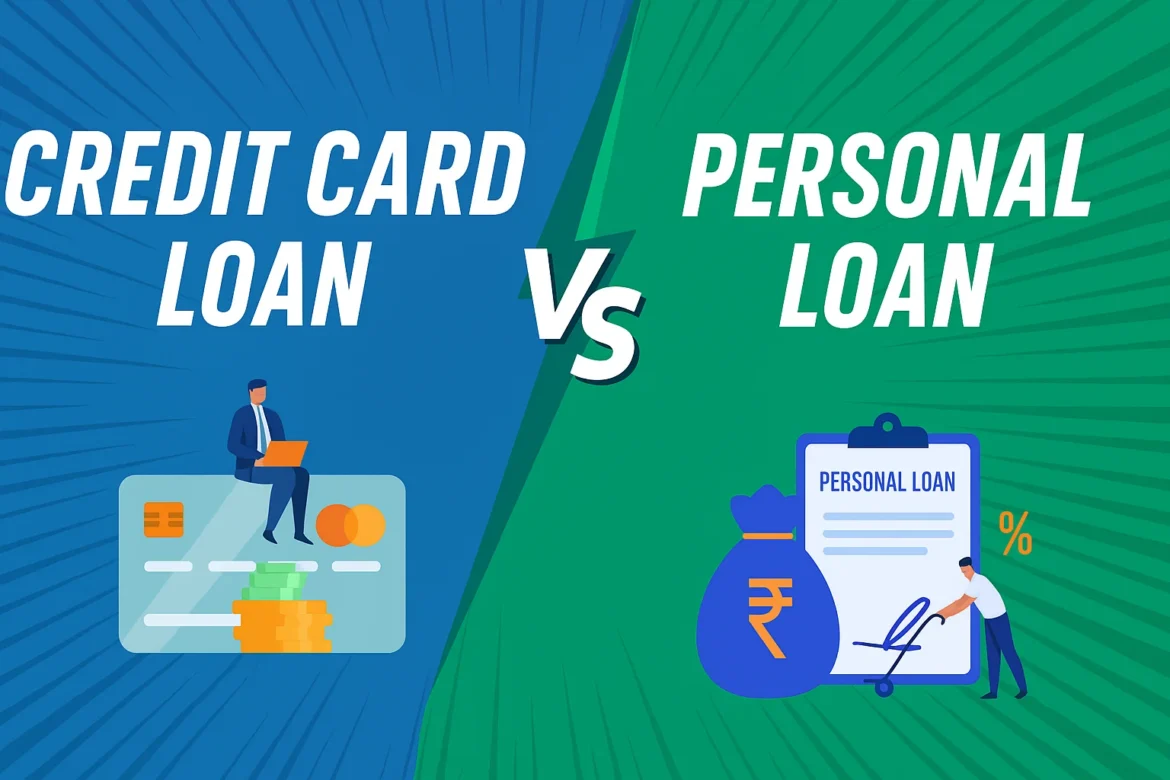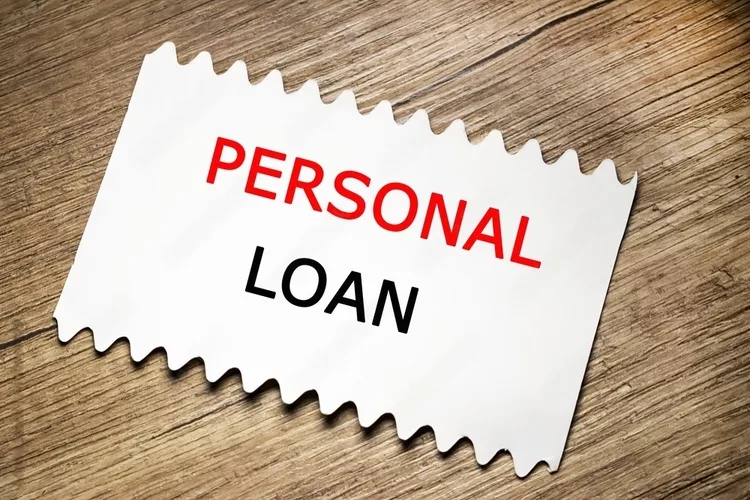💡 Introduction: Navigating Financial Options in the U.S.
In the United States, managing personal finances can feel like walking a tightrope. Whether you’re dealing with unexpected expenses, planning a dream vacation, or consolidating existing debt, you’ll likely consider two popular borrowing options: personal loans and credit cards.
Both have their own advantages and limitations. The right choice depends on your financial goals, credit health, and spending habits. In this comprehensive guide, we’ll break down every angle of the personal loan vs credit card debate so you can make an informed decision that benefits your wallet—not burdens it.
💼 What is a Personal Loan?
A personal loan is a type of installment loan, which means you borrow a specific amount and repay it in equal monthly installments over a fixed period—typically ranging from 12 months to 7 years. These loans are unsecured, meaning they don’t require collateral like a house or car.
They’re ideal for one-time, significant expenses like:
- Home renovations
- Medical emergencies
- Debt consolidation
- Wedding or moving costs
The interest rates on personal loans are often fixed, meaning your monthly payments stay consistent, helping with budget planning.
🔗 Learn more about personal loans
💳 What is a Credit Card?
A credit card is a revolving line of credit that allows you to borrow up to a certain limit and pay it back either in full or partially every month. Unlike personal loans, you can repeatedly borrow and repay money without reapplying, as long as you stay within your credit limit.
Credit cards are best suited for:
- Everyday purchases like groceries and gas
- Emergency short-term expenses
- Building or improving your credit score
- Earning rewards such as cashback, miles, or points
They offer flexibility and convenience, but the catch lies in higher APRs, especially if you carry a balance from month to month.
🔗 More on credit cards from CFPB
📊 Comparison Table: Personal Loan vs Credit Card
| Feature | Personal Loan | Credit Card |
|---|---|---|
| Type | Installment Loan | Revolving Credit |
| Best For | Large one-time expenses | Frequent smaller purchases |
| Interest Rate | Fixed, usually lower | Variable, usually higher |
| Repayment | Fixed monthly payments | Flexible, minimum or full |
| Credit Impact | Boosts credit mix | Affects credit utilization |
| Funding Speed | 1–5 business days | Instant access post-approval |
| Limit | Based on credit profile | Based on credit limit |
| Fees | May include origination | May include annual & late fees |
🧾 Personal Loans: Pros & Cons
✅ Advantages:
- Lower interest rates compared to credit cards
- Predictable payment schedule for easier budgeting
- Ideal for debt consolidation and large purchases
- Can improve credit score by diversifying your credit mix
❌ Drawbacks:
- Requires a formal application and credit check
- Some lenders charge origination or prepayment penalties
- Not suitable for frequent, smaller purchases
🛒 Credit Cards: Pros & Cons
✅ Advantages:
- Great for short-term borrowing or emergencies
- Comes with rewards programs (cashback, miles)
- Helps build credit history
- Widely accepted and easy to use for everyday expenses
❌ Drawbacks:
- High interest rates (20%+ APR) if balance isn’t paid in full
- Risk of overspending and debt accumulation
- May hurt your credit if your utilization ratio goes too high
📈 How They Affect Your Credit Score
📌 Personal Loans:
- Can help improve your credit mix (which accounts for 10% of your FICO score)
- Timely payments build positive history
- Missed payments can cause major score drops
📌 Credit Cards:
- Helps build long-term credit history
- High credit utilization (>30%) can negatively impact your score
- Regular on-time payments improve your score
💰 Interest Rates in 2025: USA Overview
Understanding interest rate trends helps make a smarter borrowing decision.
| Loan Type | Average APR (2025) |
|---|---|
| Personal Loan | 10% – 16% |
| Credit Card | 20% – 26% |
As of 2025, personal loans continue to offer significantly lower APRs compared to most credit cards.
🧮 When Should You Choose a Personal Loan?
A personal loan is the better option when:
- You’re consolidating credit card debt into one lower-interest loan
- You want a fixed monthly payment and a definite payoff date
- You’re financing a large event or expense
- You want a structured loan that discourages overspending
You’ll likely save on interest and stay disciplined with your budget.
🛍️ When Should You Use a Credit Card?
A credit card is ideal when:
- You’re making recurring purchases that you can repay monthly
- You want to earn rewards on your spending
- You need instant access to funds
- You’re focused on building your credit score
They’re also safer to use for online shopping and travel due to built-in fraud protection.
🔄 Debt Consolidation: A Smart Strategy
Many Americans turn to personal loans to consolidate high-interest credit card debt. This allows them to:
- Reduce overall interest payments
- Combine multiple debts into one
- Lower their credit utilization ratio
- Improve their credit score over time
🔗 Best debt consolidation loan providers
📝 Application & Approval Process
🏦 Personal Loan:
- Apply through banks, credit unions, or online lenders
- Requires credit check and income verification
- Approval within 1–5 business days
- Funds directly deposited to your bank account
💻 Credit Card:
- Easier and faster application process
- Many offer instant approval online
- Credit limits based on your score and income
- Immediate use once approved (often via virtual card)
🔐 Hidden Fees to Watch
Both products come with hidden fees if you’re not careful.
| Fee Type | Personal Loan | Credit Card |
|---|---|---|
| Origination Fee | ✅ Sometimes | ❌ No |
| Annual Fee | ❌ Rare | ✅ Sometimes |
| Prepayment Penalty | ✅ Some lenders | ❌ No |
| Late Payment | ✅ Yes | ✅ Yes |
| Cash Advance Fee | ❌ No | ✅ Yes |
Understanding fee structures can prevent unpleasant surprises.
🔍 Common Mistakes to Avoid
- Using a credit card for large purchases and carrying a balance
- Taking a personal loan for everyday spending
- Ignoring repayment terms or minimum payments
- Not comparing APRs across lenders or card issuers
- Overlooking fees in the fine print
Making informed decisions can save you thousands in interest and fees over time.
🧠 Expert Tip for USA Borrowers
If you’re still on the fence, use free tools like loan calculators or consult with a licensed financial advisor. Your credit profile, income stability, and spending behavior should guide your decision—not flashy card rewards or quick cash promises.
🎯 Final Verdict: Choose Based on Your Goals
- Go for a personal loan if you need structure, fixed terms, and are financing a large event or consolidating debts.
- Choose a credit card if you’re disciplined, pay monthly balances in full, and want perks.
Both options are powerful financial tools—when used responsibly. The key lies in knowing your needs, comparing offers, and avoiding the temptation of “easy money.”
READ MORE…
Top 10 Personal Loans with Low Interest Rates

